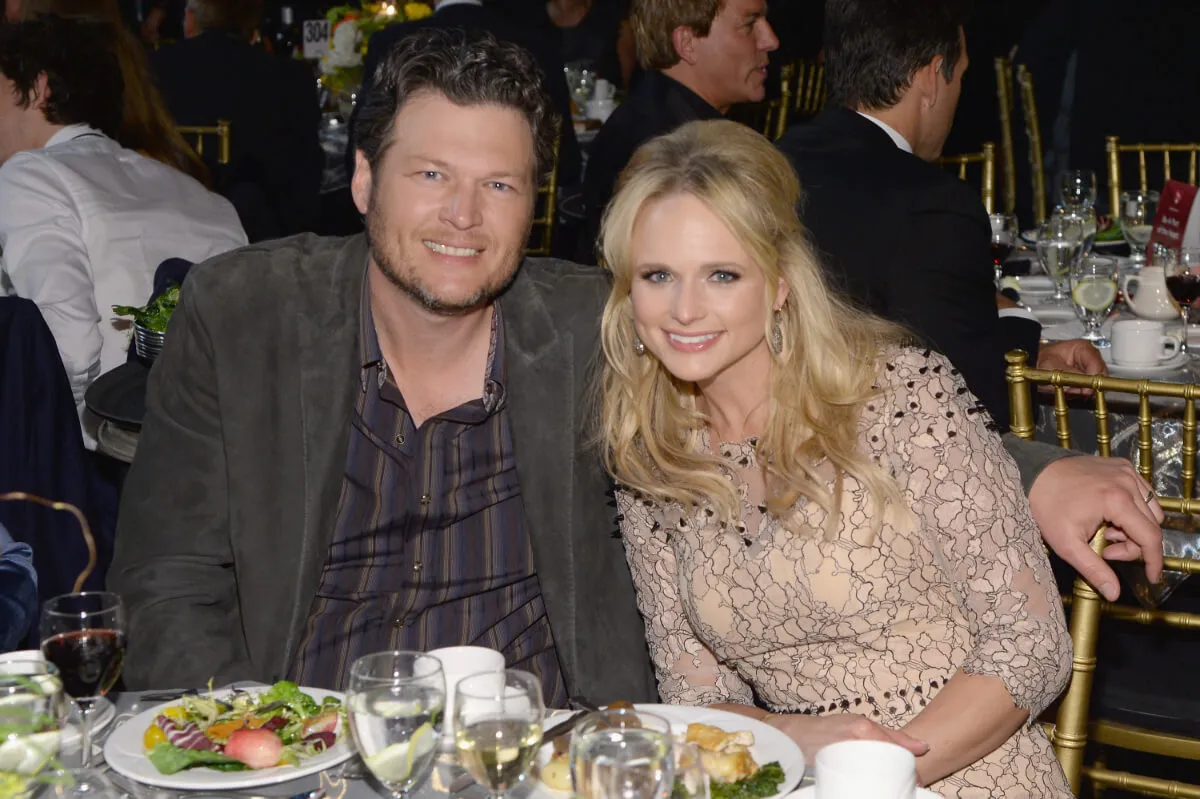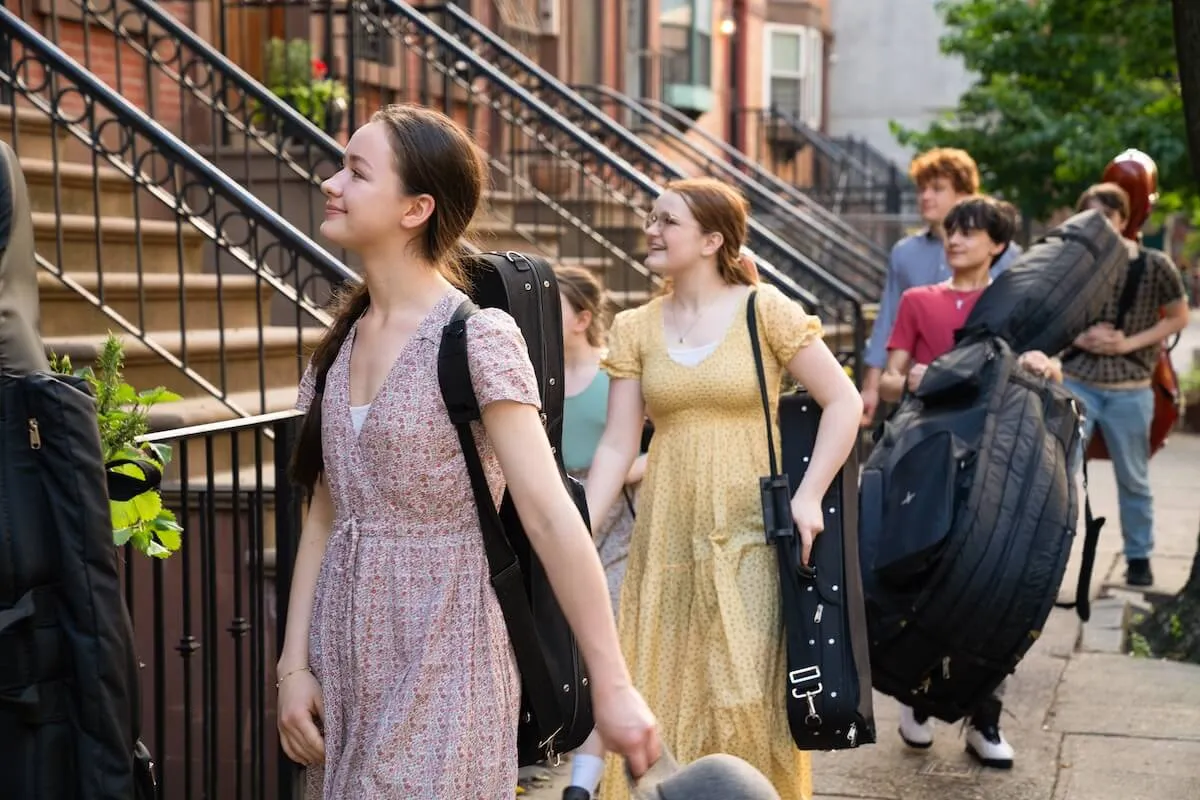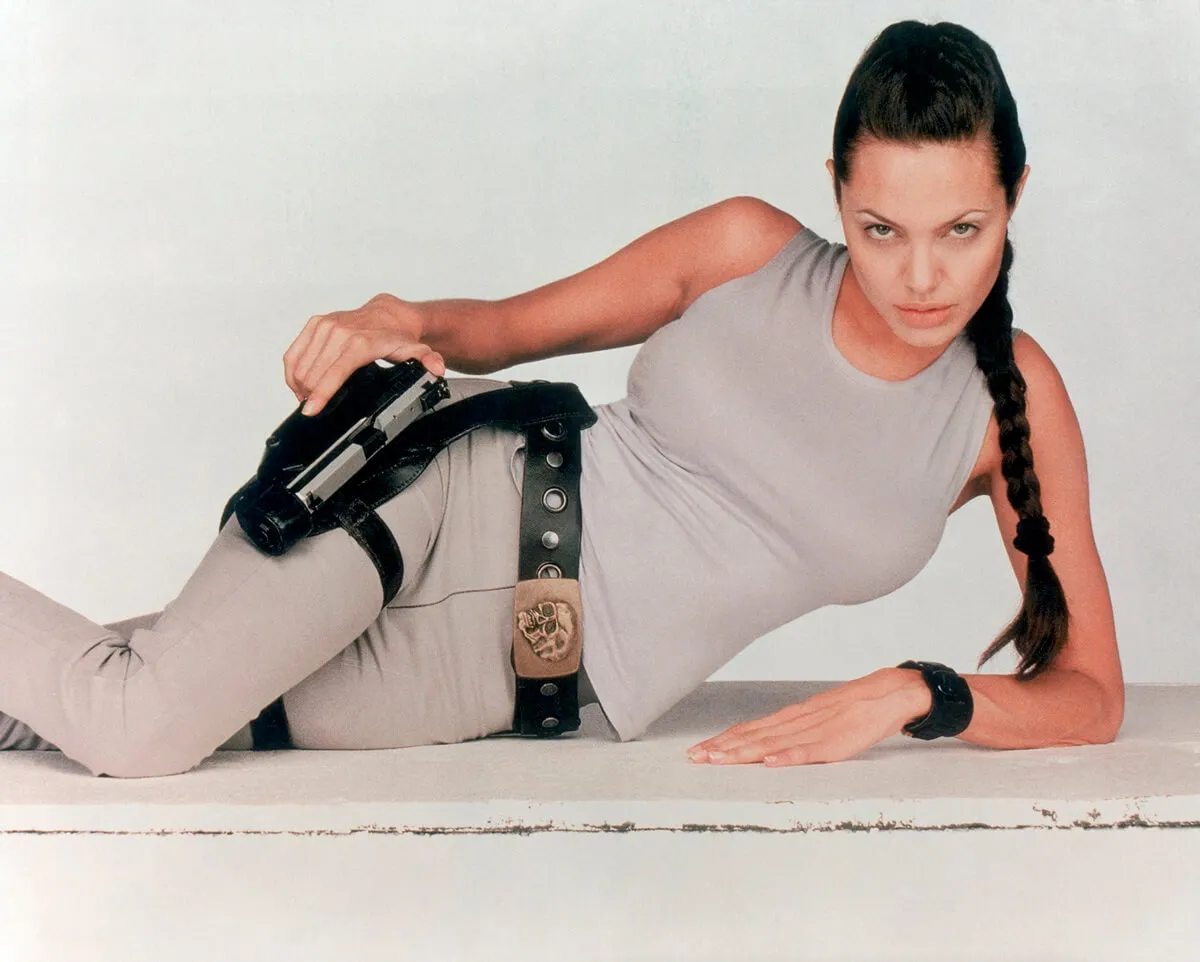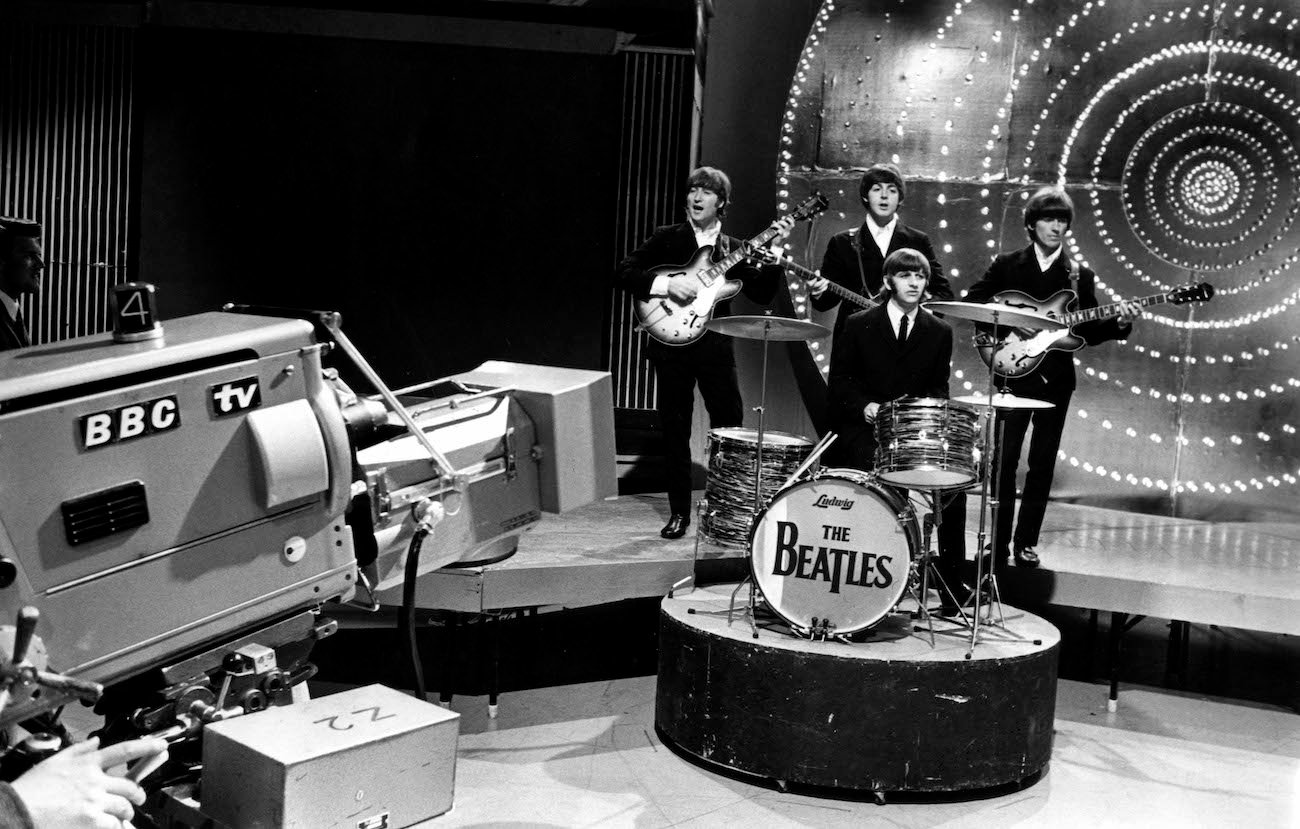
George Harrison Said The Beatles Made Music Videos Because There Was ‘Too Much Mania’ and It Was Cheaper Than Going on ‘Top of the Pops’
George Harrison said The Beatles made music videos because there was “too much mania.” Plus, it was cheaper than going on shows like the BBC’s Top of the Pops. It was a simple, cost-effective, and convenient decision for the group, not a creative one.
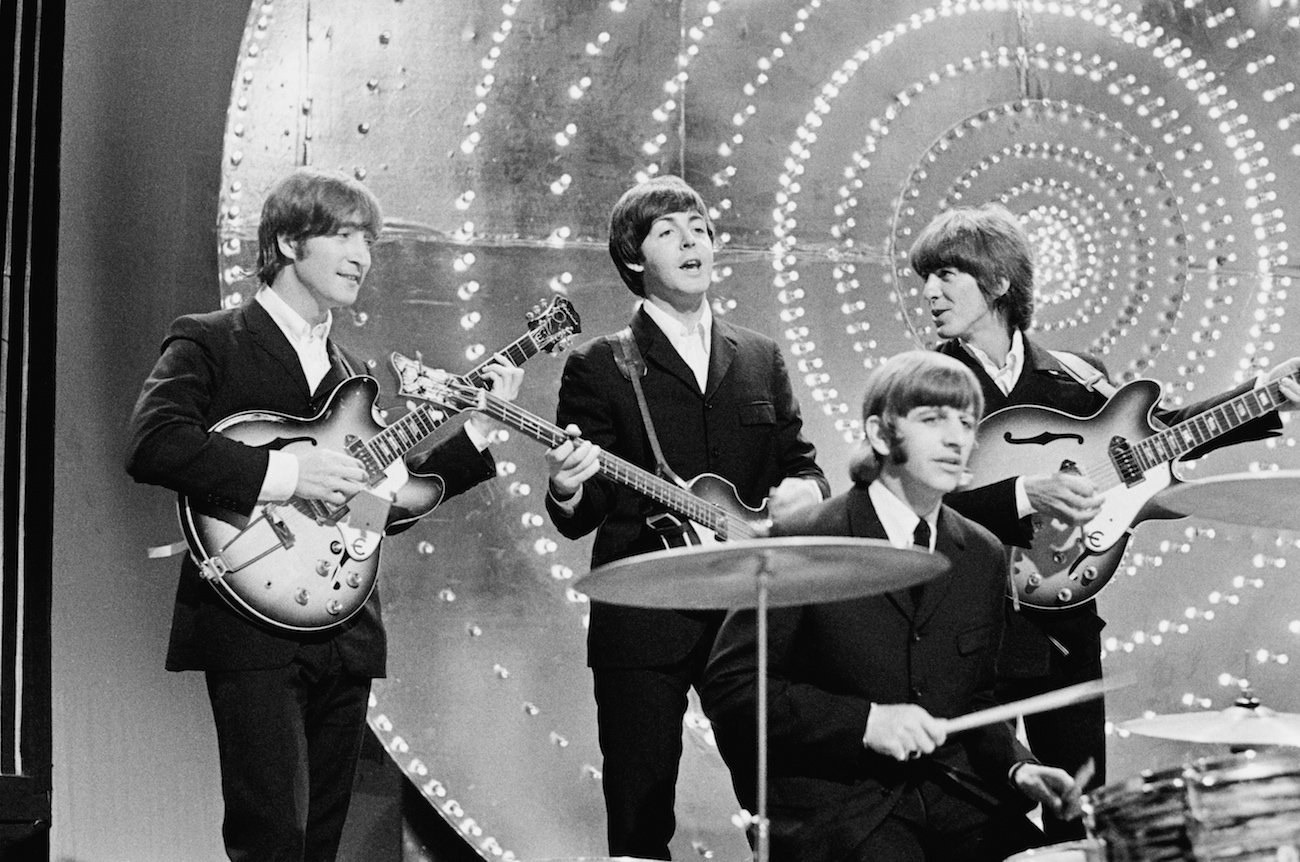
George Harrison said The Beatles made music videos because there was ‘too much mania’
By 1966, The Beatles were worn out, mentally and physically, from touring the world virtually non-stop since becoming famous. It had exhausted them, made them paranoid of assassination, and bored them. Beatlemania was in full swing, and they wanted out.
They’d become the first rock band to play a sports arena, Shea Stadium, in 1965, performing to the largest audience ever. Yet fans’ screams roared louder than the PA system. They began questioning the point of touring if it tired them so much and fans weren’t interested in listening to them.
To fans’ dismay, The Beatles cut touring out of the equation. Since they couldn’t go anywhere in person either, they cut TV performances too. However, they knew they still had to connect with their audience somehow. That’s when they recruited filmmaker Michael Lindsay-Hogg, the then-director of the British music show Ready, Steady, Go! By making music videos and promotional films, The Beatles could remain on people’s TV screens, just not in person.
Lindsay-Hogg told Entertainment Weekly, “They thought it’d be a good idea if they made their own videos. Then they wouldn’t have to appear themselves. They could just ship them all over the world.”
George explained that The Beatles made music videos out of necessity because “too much mania” was going on. The Beatles couldn’t go anywhere, let alone a TV studio for a performance.
He told MuchMusic, “It came about because it became too difficult to go into the TV companies and just do our ‘Top of the Pops’ bit, right? There was too much mania at that time. So, we just thought we’ll get a camera.”
George said it was cheaper for The Beatles to make music videos
Making an extremely low-budget music video was less expensive than appearing at TV studios. Lugging themselves and their entourage all over the world cost a pretty penny. Eventually, all they needed was Lindsay-Hogg and a field. The Beatles’ music videos for tunes like “Rain” and “Paperback Writer” cost almost nothing.
All of the group’s music videos were a necessity. They allowed the band much-needed space from crowds yet kept them connected with their fans. The easier they were to make, the better. Simplicity was key. The Beatles weren’t thinking about their music videos like some artists nowadays. They weren’t highly-conceptual videos, mostly because the art of making music videos wasn’t around yet.
Their simplistic videos were cutting-edge.
George continued, “But then, we used to just get a cameraman with a 16-millimeter, and we’d just go in a field and do it, you know? There wasn’t all these concepts and trying to-how to spend $200,000 on three and a half minutes of rubbish.”
The band could’ve had a highly-conceptualized music video for ‘Paperback Writer’
The Beatles could’ve had a highly-conceptualized music video for “Paperback writer.” Lindsay-Hogg pitched a plot where Paul McCartney played a journalist “moonlighting” as a novelist. However, the group’s manager, Brian Epstein, axed the idea.
He “didn’t want anything unusual,” Lindsay-Hogg said. Still, the director tried adding “another ingredient” to The Beatles playing their instruments in the garden. “With the Beatles, their faces tell you as much as watching them miming guitar,” the director said.
Lindsay-Hogg got to be more creative on other, later, Beatles music videos, including the one for “Hey Jude.” He also helped the Fab Four on Let It Be, although the group hated the film. In 1968, Lindsay-Hogg also stretched his creativity by conceptualizing The Rolling Stones Rock and Roll Circus.
The director could’ve given The Beatles a simple yet conceptualized music video for any of their songs. However, the group wanted the easiest way of staying connected to fans without dealing with them in person. They were innovative enough to come up with that idea.
